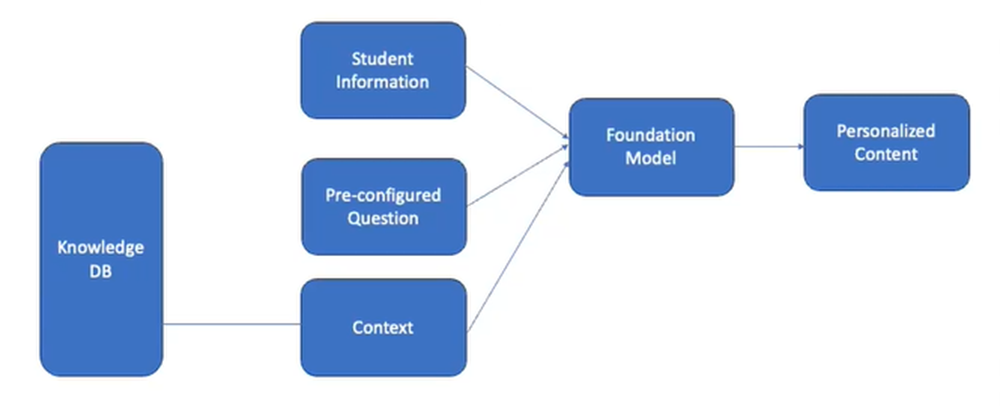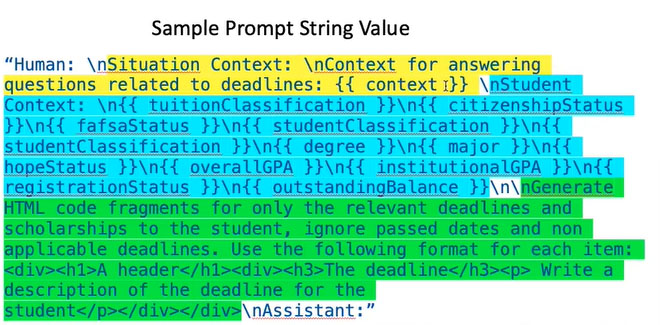Innovative AI tools
The university is using AI search technology to build novel generative AI experiences.
Generative AI skills
The university IT team developed versatile skills for building a new generation of AI-powered applications for university teams and students.
Diversity and accessibility goals
A proof of concept is aimed at helping students access financial aid with targeted and personalized information that surfaces deadlines, next steps, and relevant resources to navigate the aid process.

University boosts generative AI skills and gears up to deliver a new generation of AI-powered tools for students and academics
With over 50,000 students across seven campuses in the Atlanta metro area, Georgia State University is the number one public university for undergraduate teaching and the second most innovative university in the U.S., according to the U.S. News & World Report, 2024.
Jaroslav Klc, Director of Strategic Initiatives and Development for IT, is responsible for creating applications that support the day-to-day needs of students, teachers, and administrators while optimizing efficiency and implementing strategic use of future-facing technologies. This includes 70 custom solutions and integrations — the busiest of which is the student dashboard, where students go for a variety of information on their status as a student. Other applications move data between systems, connect to third-party tools, and integrate with the campus payment system so students can plan their finances.
Keeping a close eye on application performance is a priority for the IT team. But with only a small group of developers and analysts, Klc was keen to deploy a single observability solution across applications. "Previously, we used native observability tools that came with various platforms," says Klc. "We used their built-in software for monitoring and log analysis, but we couldn't easily create custom metrics and aggregate data from additional sources." It was also difficult to share data and dashboards with people not trained in a particular environment. "We built a unified system for providing insight into our operations and student engagement dashboards," says Klc. "With the system, it's now easier to collect, visualize, and share access to data while observing security and compliance rules," says Klc.
The system uses Elasticsearch and Kibana dashboards on AWS to ingest, store and analyze operations data and displays critical performance information, including application traffic, error reporting, scheduled jobs, and the cost of IT services.
The system also uses synthetic monitoring. "We don't want to wait until the customer tells us something is broken. With the reporting, visualization and alert features of the system, we can proactively detect potential errors and address them as soon as they occur, before they inconvenience application users," he says.
Proving the value of generative AI
Streamlining the operations work of applications like the student dashboard enabled them to experiment with new technologies to augment the capabilities of the dashboard, including vector search and generative AI. Klc says, "We built a proof of concept demonstrating how AI can support the goals of the university and our students."
Klc chose the student financial aid application and payment process as the subject of the experiment. "The financial aid process can be complicated as students try to understand whether they qualify for scholarships and grants. Students who need assistance but can't find funding may be less likely to complete their college degrees. The student financial services team collaborated with us to envision a service that enables students to quickly understand their current status and individualized options in the path to securing aid and assuring balance payment."
Their search applications split the documents into passages, indexing those documents in Elasticsearch to perform semantic searches to retrieve relevant passages. With the relevant passages, the team builds a context and uses the Amazon Bedrock model to compose answers to predefined questions.
In addition to content that can be retrieved using traditional keyword matching and other criteria, Klc wanted to use a large language model to generate highly personalized information for the students based on their records, financial aid resources, events, and deadlines.
Racing ahead with retrieval models
The proof-of-concept application also allows customers to perform semantic searches based on contextual meaning and user intent, in addition to exact keyword matches, using Elastic's ELSER (Elastic Learned Sparse EncodeR) model. "Student financial aid combines a lot of content from multiple sources," says Klc. "We process all this information, vectorize it for semantic search, and display content that answers two critical questions. First, what financial aid resources are the most relevant and helpful given the student's situation? Second, what are the deadlines to which they must adhere?"
The solution uses a knowledge base to build context for a prompt. The system adds the question and student information, and a model generates personalized content. "We harvest content from several places, chunk and vectorize the text, and then undertake pre-processing using AI to create meaningful and relevant chunks."

Ready for RAG
ELSER provides underlying support for the university's retrieval augmented generation (RAG) workflow, which supplements text generation with information from private or proprietary data sources. In the case of the financial application tool, the workflow combines context retrieved with the ELSER model from the university's data sources, such as the student information system, with instructions that tell the Generative AI model what to do with the information. When students visit the AI-enhanced financial dashboard, they are presented with personalized content reflecting their current status as well as information about an external financial aid resource relevant to their status. In many cases, they may be alerted about a deadline for a financial aid resource they qualify for based on a set of conditions contained in the description of the external resource. This would be difficult to accomplish with deterministic rules and more traditional deterministic logic.

With the creation of the proof of concept, the IT team has acquired valuable experience that will help other departments take advantage of AI-powered search. "This project succeeded in two important areas," says Klc. "One was to create a viable AI model that can be piloted for its potential to help students navigate the complexities of applying for financial aid. The second was to build and develop skills to take advantage of emerging AI technology, especially the generative AI subsegment."


